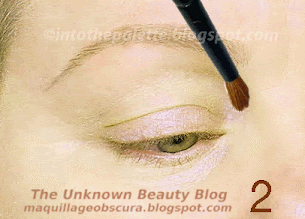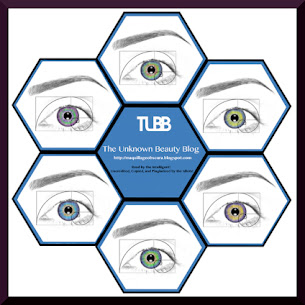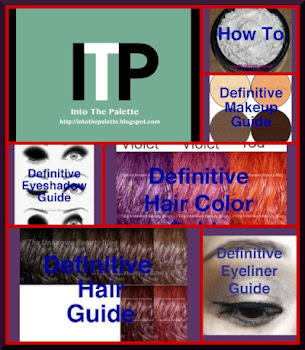By now, your head is probably hurting from my previous posts, so I thought I would concentrate on the types of hair color. The formula chosen will affect the hair and how long the color lasts.
You have seen all the little tubes and boxes of hair color at the beauty supply shops and drugstores ranging from permanent to semi-permanent. The overall lasting effect depends on the formula you choose. Do you want it to last? Or, do you just want it for a week?
Types of Hair Color
Permanent Hair Color
Permanent hair color is just that, permanent. It will be on your hair until you cut it off or until you apply another color to change it. You will have to retouch the roots every 4 to 6 weeks.
There are two types of permanent, one with ammonia and another without. Ammonia is needed to give that extra boost for hair color penetration. It also has a very strong order. Ammonia will offer resistant greys more penetration of color (but it can’t guarantee a lasting effect).
The no-ammonia hair color which can lighten hair color contains a no-ammonia substitute instead. Less stink and harshness for the nose.
Then there is the actual no ammonia. This type of hair color is deposit only. This means it can’t lighten hair; it can only color it at the same level or darken.
Permanent hair color is mixed with a developer (hydrogen peroxide) and the volume used will affect how much lighter your color and the hair color will go.
Then, there are ones that will only deposit color and use no form of peroxide. For example, Bigen.
This is a powder mixed with water, preferably distilled water since the minerals in tap water can change the outcome.
This can only deposit, darken, and is permanent. They are mostly used to really cover greys since they are so resistant. Usually, these types lack a glow. The hair can look flat and matte. To alleviate this, highlights are usually added for more of a natural finish.
Permanent hair color needs to be on the hair for the allotted time which is usually 35 to 40 minutes. Don’t think if you cut the time in half, you will get a lighter (color) application! If you wanted a lighter color, you picked the WRONG hair color!
Demi Permanent
This type of hair color has become very popular thanks to almost everyone coloring (and messing up) their hair. Color correction is usually done with demi since it offers less damage to an already opened-cuticle hair shaft. This formula also washes out within 16 to 24 shampoos, thus the reason many adverts will say you won't have roots to worry about.
Demi permanent is a no-ammonia deposit only hair color. It won’t lighten hair. If you are buying it thinking it will, then you will have to wish very hard and into the parallel universe because it just won’t lighten. However, it will darken or change the shade of your natural hair color. A developer made for demi-permanent is used or a very low volume of peroxide.
Demi permanent can become permanent depending on the state of your hair, most of it will wash out and/or fade. But, if you have extremely porous hair; the color will most likely stay and make a home in your hair shaft.
Demi permanent is used also as a toner. A toner usually was applied after bleaching hair to cut down on brassiness and any unwanted tones. Basically, it would neutralize the unwanted color and amplify the wanted highlight tones of bleached hair.
Demi permanent can also be used as a filler for hair. A filler is used to add pigments that have been taken away.
Semi Permanent
Semi permanent hair color comes in many colors from wild to tame. Sometimes, you want to just tone down your hair or even add some gold to it without having to lighten or commit. Maybe, you are going to some party and just want that change.
Semi permanent is usually just a bottle of color which will coat the hair. No developer is used with this formula. Since time and heat is used to set the color, the commitment is usually about a week or so depending on how often you wash and how porous your hair is. The color will not stay since it doesn’t have the push to penetrate the cuticle of the hair.
I admit, as much as I like the wild colors in this category; I find it tedious since the colors easily wash out. Thus, the label semi-permanent.
Metallic Hair Dyes and Henna
These two categories are two which can’t be mixed with the regular hair color system. Meaning, you can’t color over these, they either have to grow out or be removed.
Metallic Hair Dyes are most popular for men. They use metallic salts which will color and coat the hair, gradually adding more color with each use.
Henna is used by many who love it. I for one have tried it but found it just left the texture of my hair not to my liking.
Henna coats the hair and colors. It will create a coating around the hair each time it is used making the hair shaft impenetrable for other colors. Mostly, henna will thicken the diameter of the hair texture as it colors.
Henna does contain metallic salts and metallic salts react with chemical haircoloring. It will produce heat, heat that will burn. This is why it is important to remove before using any chemical form of coloring.
Procedure for Removing Metallic and Coating Dyes. Proceed with caution and at your own risk!
- Apply 70% alcohol to the hair and allow to stand for 5 minutes.
- Without rinsing the alcohol, apply a heavy oil (mineral, castor, vegetable) thoroughly to the hair.
- Cover the hair with a plastic bag and place under a hot dryer for 30 minutes.
- Remove mixture from hair using a concentrated shampoo for oily hair.
- Work shampoo into hair for 5 minutes then rinse with warm water.
- Repeat shampoo steps until oil is completely removed.
The Developer
You know that bottle of developer that has the number then the volume? Well, what number you choose here can really make or break your hair color.
The developer is a creamy mix of hydrogen peroxide (H2O2) and some other magical ingredients. Basically, a developer is an acid and the hair color is alkaline. Mix these two together and you get a chemical reaction which will allow the hair’s inner cortex to swell (open up) and allow the color to be deposited.
The volume chosen can darken the hair, keep it at the same level (remember the hair levels), or to lighten.
- 0 volume - zero volume developer is used to dilute, why use it? It keeps the consistency of haircolor. I just use distilled water or tap water to dilute a developer.
- 10 volume (and anything lower)-tone on tone deposit will not lighten (mostly staying in the same color family)
- 20 volume-used to darken, lighten one level or level on level (want to stay at the same level but different color family)
- 30 volume - 2 levels lighter
- 40 volume - 3 to 4 levels lighter
Sometimes, you will only see numbers like 3, 6, 9, 12 with no volume number. (Some fancy brands will do that to you.) Just remember this:
- 10 volume=3% hydrogen peroxide
- 20 volume=6% hydrogen peroxide
- 30 volume=9% hydrogen peroxide
- 40 volume=12% hydrogen peroxide
Developer can also be diluted to lower the peroxide level. In this case, distilled water should be used.
Let’s say you need 2 oz. of 15 volume peroxide but only have 20 volume. Don't panic! Pour 1.5 oz of 20 volume and add .5 (1/2) oz of distilled water.
- 1.5 oz 20 volume + 0.5 oz distilled H2O = 2 oz 15 volume
Maybe, you want 10 volume instead. Just use 1 oz of 20 volume and 1 oz of water. You see the pattern?
- 1 oz 20 volume + 1 oz distilled H2O = 2 oz 10 volume
Also, if you have 20 volume and 40 volume but no 30 volume, you don’t have to go out and buy a bottle. Just mix 1oz of 20 volume and 1 oz of 40 volume and it will give you 30 volume.
- 1 oz 20 volume + 1 oz 40 volume = 2 oz 30 volume
The following is a chart of the suggested volume of developer for the hair color you want to achieve. Notice some can use either 10 volume or 20 volume. This all depends on the condition of the hair, the commitment you want (do you want it long lasting or do you want it less damaging, etc.). For the ones that have DB, that stands for double process or bleach which will be covered in another post!
Grey hair people, you are special! You will get an entirely separate post!
Mixing
Haircolor is alkaline and the developer is an acid with a pH 4 or below. Mixing the developer with hair color will act as an oxidizing agent allowing the hair to color and lighten. The chemical reaction of color and developer.
Usually, the ratio of hair color to developer is 1:1. Sometimes, though you get those which will say 1:2. The best way to know, especially if you only buy hair color in the tubes or individual bottles is, if a tube or bottle is 2 oz, then the amount of developer needed is 2 oz. Some brands will have an amount of 1.5 oz. This is where you need to use twice as much developer, 3 oz. Basically, the rule is, if the amount of hair color sold isn’t sold in complete ounces, then you are to use twice the amount developer.
Developing Color
The time left on the head is usually between 30 to 45 minutes, after that it just has oxidized too much and won’t do much. The first 10 minutes or so is for opening up the cuticles on the hair, this is so important. If it doesn’t the hair color won’t deposit. Next 10 minutes the color will travel in between the cuticles, and the rest of the time the pigments will find a new place in your hair and sit comfortably.
Like I said, cutting your time in half hoping the color will apply lighter does not compute! Haircolor has to develop thoroughly in order to be the color it has to be. If it isn’t the color you want it to be, then you picked the wrong color. And, that is YOUR FAULT!
Next post, knowing what will be your fault!
As always, any mention of this blog will give an independent angel its wings or a rockin' angel a cool electric guitar!
*Disclosure: I don’t claim to be some great hair guru. I just like to explain difficult beauty stuff.
*pictures from Sally's Beauty Supply
*Links provided for your convenience. I have no affiliation.*



















